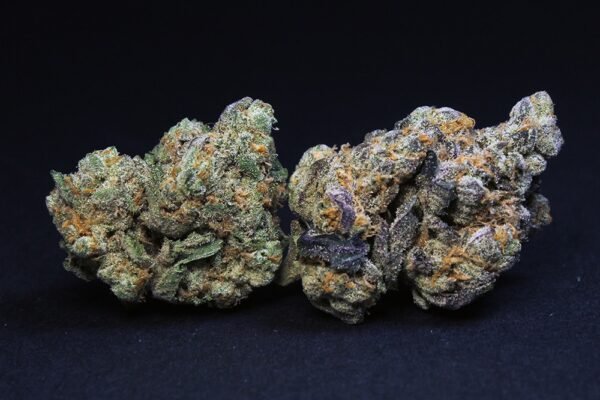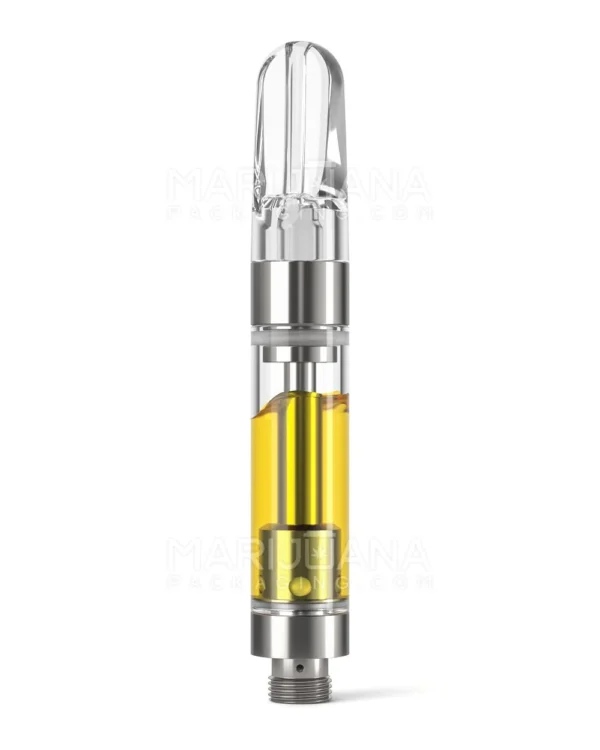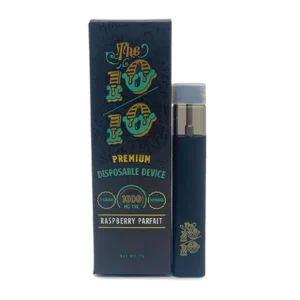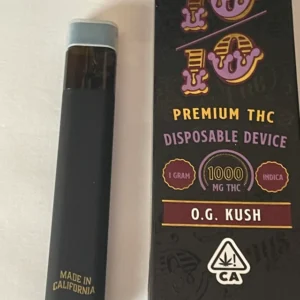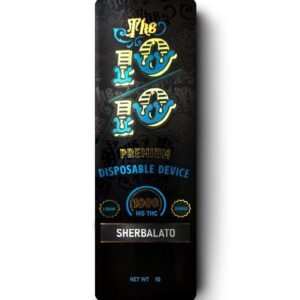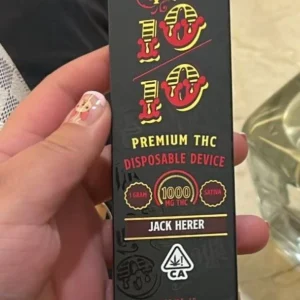Cannabis
The Complete Guide to Delta-10 THC, a Lesser-Known Cannabinoid
Most people know about Delta thc-9, delta thc-10 (commonly just called “THC”) and cannabidiol (CBD), two of the most popular cannabinoids.
However, delta 10 THC, a minor cannabinoid, is becoming more popular and widely available due to its legality and unique effects. The high from delta 10 is distinct from conventional THC products.
In this guide, you’ll learn what delta 10 is, how it differs from THC, what it feels like, how to dose delta 10, and much more.
What Is Delta 10 THC?
Delta 10 is a minor phytocannabinoid, meaning it is a naturally produced compound extracted from cannabis plants.
Much like delta 9 and delta 8 , delta-10 is a psychoactive cannabinoid and produces mind-altering effects, commonly referred to as a “high.”
Delta 10 is an analog of delta 9 , meaning it has an almost identical molecular structure and chemical makeup. The primary difference is the location of the double bond in the carbon chain. As the name suggests, the double bond is located at the tenth position in delta-10 THC and the ninth in delta-9 THC.
Users of delta-10 THC report that, although there are molecular similarities, the psychoactive effects of this compound are much weaker than those of THC.
Most people agree delta 10 THC is around 50% as potent as delta-9 THC.
As such, it’s harder to take a large dose accidentally, and it’s less likely to cause adverse effects of THC, like paranoia and anxiety.
The most commonly reported effects include increased focus and attention, perceptual changes, and a sense of euphoria.
Delta-10 THC: Specs & Technical Details
| Principal Element | Delta 10 THC |
| Level of Risk | Low |
| Other Names | Δ10, D10, Delta 10 |
| Most Common Side Effects | Red eyes, increased appetite (“munchies”), increased heart rate |
| Duration of Effects | 2-10 hours, depending on delivery method |
| Legality | Legal in most countries (if derived from hemp) |
After Taking Delta 10 THC, What Feels Good?
Delta 10 THC is believed to be about half as potent as THC, but it still delivers comparable feelings of euphoria and altered sensory perception.
Most users report pleasant and positive emotions, as well as giggliness. Not many people who take delta 10 report experiencing paranoia or anxiety after using it.
Delta 10 THC users also note significant nootropic effects, including a surge in energy, increased focus and concentration, and heightened awareness of the world around them.
These effects have reportedly inspired and motivated some people. It’s a common choice among students and entrepreneurs who like using cannabis products while they work but want to maintain a clear head while they work or study.
Delta 10 is often suggested to have nootropic effects when used in lower doses (5–20 mg).

How Delta 10 THC Feels According to Dose
The effects of delta-10 THC change depending on the dose.
Microdoses
Lower doses (1-5 milligrams) are considered microdoses. Most users report feeling slightly energized, similar to the effects of a cup of coffee. Other effects include an increased ability to focus and concentrate. You’re unlikely to feel “high” at this dose.
Minimal Dosage
Anything from 10 to 20 milligrams is regarded as a low dosage of delta 10. Reports of this dosage typically include feelings of minor euphoria, heightened focus and attention, and boosted energy levels. Sensitive individuals may feel some mild perceptual changes with this dose.
The typical dosage of psychoactive substances
The standard dose of delta-10 THC is between 20 and 50 milligrams. At this dose, intense feelings of euphoria are likely to present, along with clear alterations in perception.
It feels a lot like conventional marijuana products at this dose, but with more emphasis on the euphoric and energized end of the spectrum.
Some users report impairment of motor skills and intoxication that keeps them from their daily routine.
Heavy Dose
A heavy dose of delta-10 is considered anything above 50 mg.
Intense feelings of euphoria should be expected, along with the characteristic high from marijuana extracts.
At this dose, delta 10 might have adverse effects when it comes to focusing and remaining attentive, as intoxication and motor skills impairment are also typical. Users may feel more creative but will likely find it difficult to channel this creativity and remain on-task.
How Long Do the Effects of Delta 10 Last?
The effects of inhaling this compound usually set in within a few minutes and last about 2-3 hours, on average.
Most commercial delta-10 THC is available in disposable vapes or vape cartridges. However, other methods of consumption can lead to longer onset timelines and more prolonged effects.
For example, delta-10 THC edibles can take 45 minutes to two hours to kick in, and the effects typically last for between 4 and 10 hoursS
ublingually administered delta-10 tinctures typically start working in 10–30 minutes and continue for 4–8 hours on average. If the tincture is swallowed after use, a more intense psychoactive effect can be expected within 1–2 hours after consumption.

Is Delta 10 THC Legal?
Delta 10 is technically legal in many countries as long as it is made from hemp (not marijuana). It’s semantics, but it’s the way the law works at least, in the United States. Updates to legislation are expected to remove the loophole allowing delta 10 and delta 8 sales in the United States sometime in 2022.
Currently, as per the 2018 Farm Bill, the commercial cultivation of hemp plants, which contain under 0.3% delta-9 by weight, and their byproducts are legal.
Some states have implemented regulations on the production, sale, possession, and use of delta-10 Other states have banned the substance altogether.
States in the U.S. Where Delta 10 Is Illegal
Unless a state regulator specifically bans the sale and production of delta-10 , it’s legal under federal regulations.
Here’s a list of states that have moved to ban the sale of thc-analogs, including delta 8, delta 10, and delta 9 THC:
Side Effects of Delta 10
Most delta-10 users have a positive experience when consuming the cannabinoid, but there are some side effects that have been reported. Most of these are more prevalent with larger doses.
Side effects of Δ10 THC include:
- Red or dry eyes
- Increased appetite (referred to as the “munchies”)
- Dizziness
- Dehydration
- Excessive thirst (“cotton mouth”)
- Increased heart rate
- Altered perception of time
- Increased sensory sensitivity
How Delta 10 THC Works
The specifics of how delta-10 THC works are unconfirmed at this time, as there isn’t enough research yet on how it interacts with the body. However, it can be assumed that it similarly to delta-9 THC and delta-8 THC.
It’s believed that delta-10 THC interacts with the CB1 and CB2 receptors of the endocannabinoid system. This system includes a series of receptors that send signals through the central nervous system to interact with the brain.
Delta 10 likely binds with the receptors, simulating a natural process that regulates a variety of other neurotransmitters, including dopamine, serotonin, and norepinephrine.
Delta-9 THC acts the same way and has a significant effect on serotonin, dopamine, and GABA, among other neurotransmitters [3,4]. It can be assumed that delta-10 affects the same neurotransmitters, albeit to a different extent. The changes to neurotransmitter levels are what create the psychoactive experience for the user.
Delta-10 enters the bloodstream in one of three ways:
- Inhalation: Through the alveoli, if an inhaled product is used
- Sublingual administration: through the sublingual capillaries, if a tincture is used, or
- Oral administration: through the digestive tract if an edible or gummy is used.
The History & Future of Delta 10
Delta-10 THC was first discovered in the 1980s when it was synthesized from delta-9 . The process reportedly involved advanced chemistry and potentially dangerous substances, so no commercial production was carried out immediately following its discovery.
However, Fusion Farms, a California-based cannabis manufacturer, accidentally discovered that delta-10 could be synthesized more safely from delta 9 and CBD.
The improved safety of the process and the final product meant that delta-10 could be manufactured on a commercial level, making it more readily available for users.
Delta-10 exists in a legal grey area in the United States. Provided it’s derived from hemp and not marijuana, many people believe it’s legal for production, sale, and consumption. Companies continue to sell Delta 10 products, sourcing the Farm Bill of 2018 as legislature enough to confirm its legality.
Some states throughout America have illegalized delta-10 due to a lack of research on the compound. As such, there is some evidence to suggest that it might be more widely prohibited in the future.



